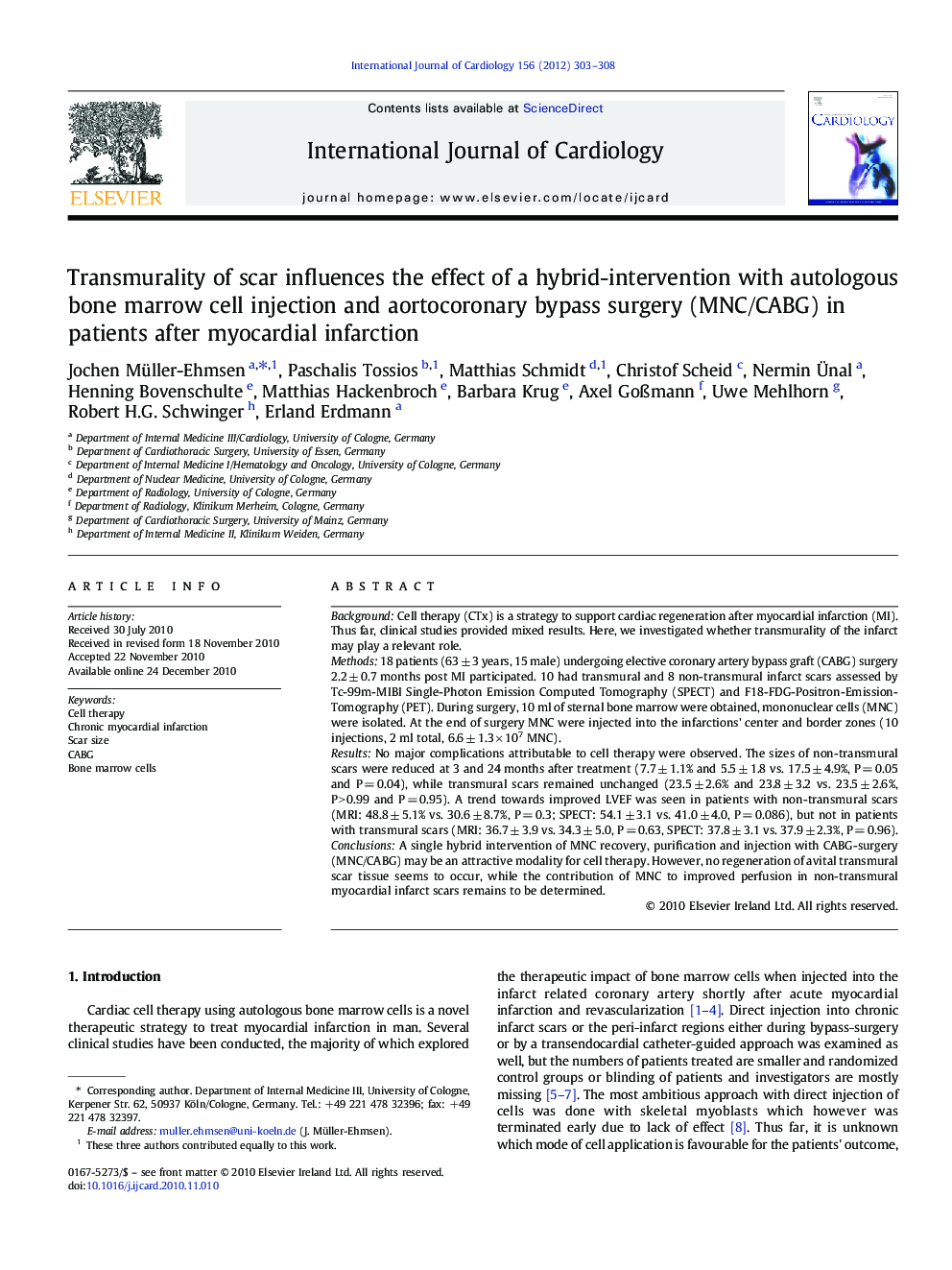| Article ID | Journal | Published Year | Pages | File Type |
|---|---|---|---|---|
| 5978006 | International Journal of Cardiology | 2012 | 6 Pages |
BackgroundCell therapy (CTx) is a strategy to support cardiac regeneration after myocardial infarction (MI). Thus far, clinical studies provided mixed results. Here, we investigated whether transmurality of the infarct may play a relevant role.Methods18 patients (63 ± 3 years, 15 male) undergoing elective coronary artery bypass graft (CABG) surgery 2.2 ± 0.7 months post MI participated. 10 had transmural and 8 non-transmural infarct scars assessed by Tc-99m-MIBI Single-Photon Emission Computed Tomography (SPECT) and F18-FDG-Positron-Emission-Tomography (PET). During surgery, 10 ml of sternal bone marrow were obtained, mononuclear cells (MNC) were isolated. At the end of surgery MNC were injected into the infarctions' center and border zones (10 injections, 2 ml total, 6.6 ± 1.3 Ã 107 MNC).ResultsNo major complications attributable to cell therapy were observed. The sizes of non-transmural scars were reduced at 3 and 24 months after treatment (7.7 ± 1.1% and 5.5 ± 1.8 vs. 17.5 ± 4.9%, P = 0.05 and P = 0.04), while transmural scars remained unchanged (23.5 ± 2.6% and 23.8 ± 3.2 vs. 23.5 ± 2.6%, P > 0.99 and P = 0.95). A trend towards improved LVEF was seen in patients with non-transmural scars (MRI: 48.8 ± 5.1% vs. 30.6 ± 8.7%, P = 0.3; SPECT: 54.1 ± 3.1 vs. 41.0 ± 4.0, P = 0.086), but not in patients with transmural scars (MRI: 36.7 ± 3.9 vs. 34.3 ± 5.0, P = 0.63, SPECT: 37.8 ± 3.1 vs. 37.9 ± 2.3%, P = 0.96).ConclusionsA single hybrid intervention of MNC recovery, purification and injection with CABG-surgery (MNC/CABG) may be an attractive modality for cell therapy. However, no regeneration of avital transmural scar tissue seems to occur, while the contribution of MNC to improved perfusion in non-transmural myocardial infarct scars remains to be determined.
